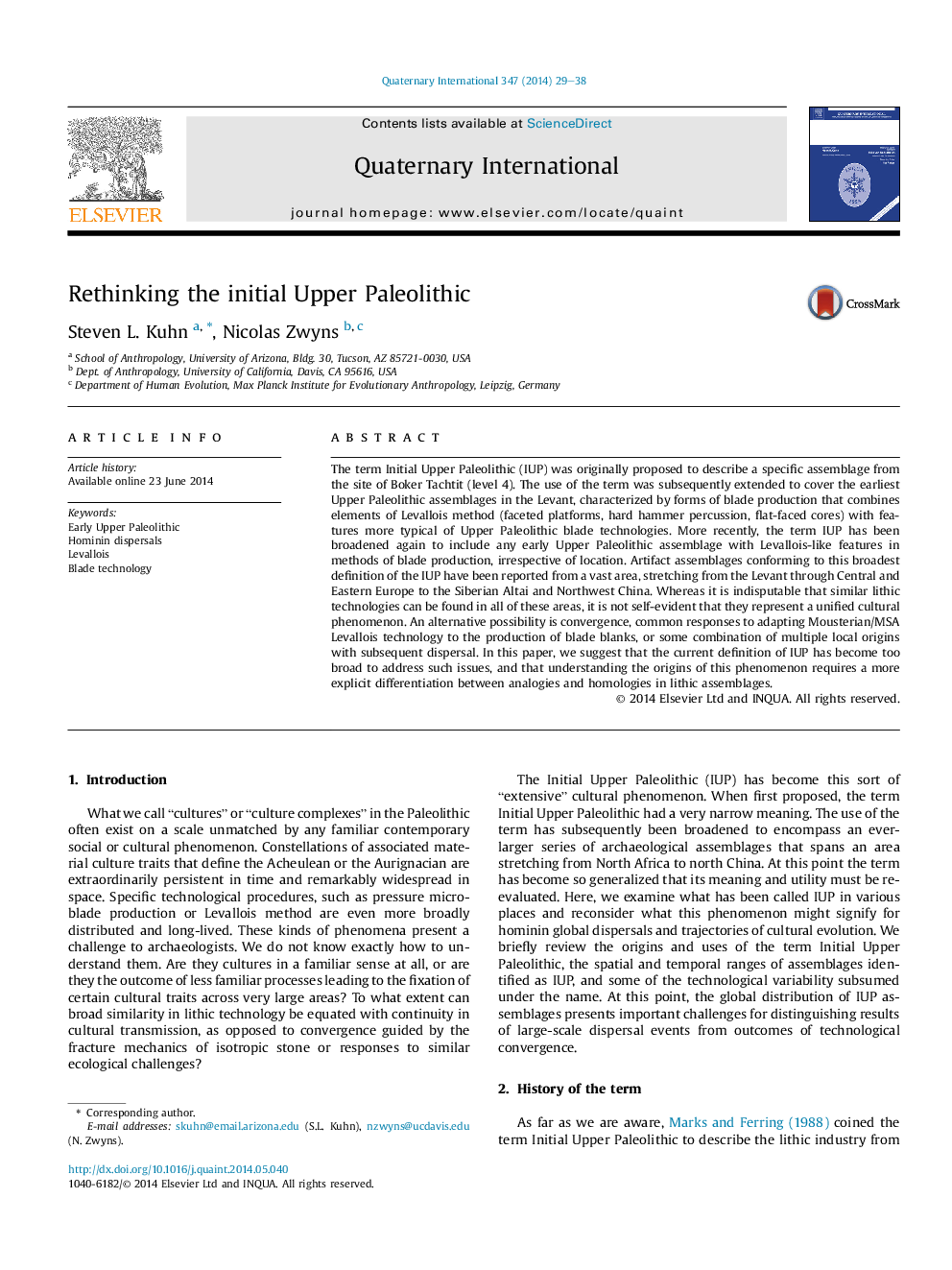| Article ID | Journal | Published Year | Pages | File Type |
|---|---|---|---|---|
| 1041082 | Quaternary International | 2014 | 10 Pages |
The term Initial Upper Paleolithic (IUP) was originally proposed to describe a specific assemblage from the site of Boker Tachtit (level 4). The use of the term was subsequently extended to cover the earliest Upper Paleolithic assemblages in the Levant, characterized by forms of blade production that combines elements of Levallois method (faceted platforms, hard hammer percussion, flat-faced cores) with features more typical of Upper Paleolithic blade technologies. More recently, the term IUP has been broadened again to include any early Upper Paleolithic assemblage with Levallois-like features in methods of blade production, irrespective of location. Artifact assemblages conforming to this broadest definition of the IUP have been reported from a vast area, stretching from the Levant through Central and Eastern Europe to the Siberian Altai and Northwest China. Whereas it is indisputable that similar lithic technologies can be found in all of these areas, it is not self-evident that they represent a unified cultural phenomenon. An alternative possibility is convergence, common responses to adapting Mousterian/MSA Levallois technology to the production of blade blanks, or some combination of multiple local origins with subsequent dispersal. In this paper, we suggest that the current definition of IUP has become too broad to address such issues, and that understanding the origins of this phenomenon requires a more explicit differentiation between analogies and homologies in lithic assemblages.
